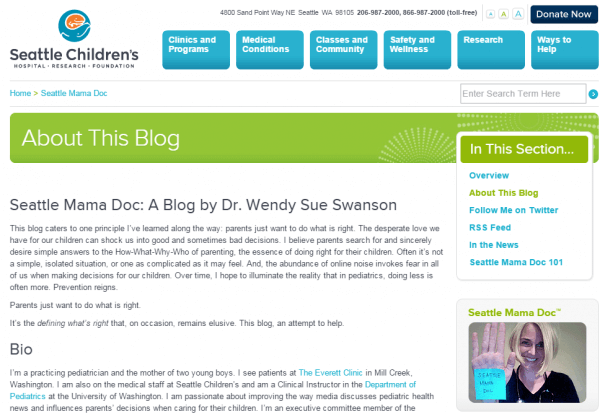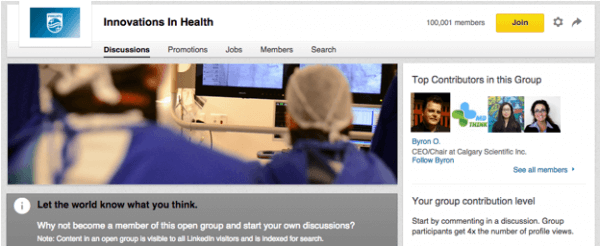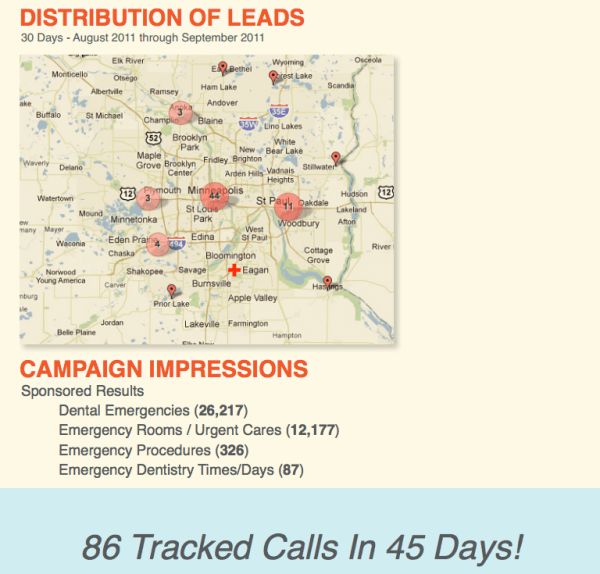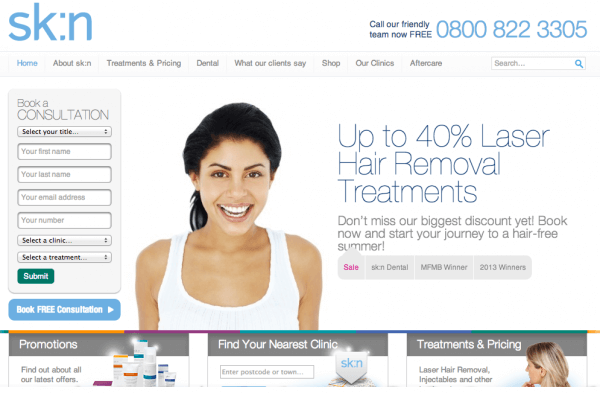In today’s modern age, marketing and media have become an essential part of organizational growth – even for medical practices. The truth is, more and more people have transitioned to seeking information on the web, including health information. A Pew Research Center Report states that “72% of internet users said they looked online for health information within the past year”. That means doctors, practices, and hospitals need to “get with the times” and establish an online web presence. If not, you might be out of a job in no time.
Marketing CRM platforms like ReferralMD can provide general exposure to your healthcare facility and what services you offer by allowing patients and other referring doctors to find you on the top pages of Google and other search engines.

According to a 2008 survey of over 12,000 physicians, only 17% of physicians rated the financial position of their practices as “healthy and profitable”. 17 percent! Yes, that means that 83% of those physicians aren’t making money. In fact, a recent Wall Street Journal article by Dr. Sandeep Jauhar reports that the “return on educational investment for primary-care physicians, adjusted for differences an in number of hours worked, is just under $6 per hour”. That’s less than the average federal minimum wage!
So what medical marketing and media strategies can doctors and practices apply that really work in order to increase profits and salaries? Here’s seven:
1. Emotionally-Compelling Offline Media
Why is it that TV, print, and outdoor media still works for the healthcare industry? It’s because everyone has different media preferences, and oftentimes consume both offline and online media before making a decision. In a 2012 Google/Compete Hospital Study, 84% of patients use both online and offline sources for research. Of those patients who used offline media:
- 32% of patients use the TV for research.
- 20% of patients use magazines for research.
- 18% of patients use newspapers for research.
So it seems that offline media is still effective after all. In fact, with the right approach, it can be just as powerful as online media. Take Saint Francis Hospital’s Orthopedic Center as an example. They hired an agency to help them run emotionally compelling TV, print, and outdoor ads that resulted in 75% market penetration in Saint Francis’s primary and secondary markets. To make this campaign compelling, the agency identified who their target audience was, what their pain/problem was, and then spun it in a way that was positive, informative, and resonated with that target audience. Furthermore, they included a clear call-to-action (“call us”) and a way to take that action by including their phone number.
However, I’m not so sure that mentioning that they’re listed in the NYNEX Yellow Pages was necessary. Who even uses the Yellow Pages anymore? (No offense to you if you do.)
(Image Source: The Orthopedic Center at Saint Francis Hospital by Smith & Jones Healthcare Marketing)
2. Search Engine Optimized (SEO) Blogs & Websites
Speaking of advertising in the Yellow Pages, say hello to Google – the new Yellow Pages. Today, Pew Internet Research says 77% of online health seekers began their last session at a search engine such as Google, Bing, or Yahoo. Search engines, like Google, have become so sophisticated for helping people find what they’re looking for, that now you can literally type medical specialists or medical specialists near me into their search box and it will populate a list of the most authoritative medical specialists in your geographic area.
But wait…what do you mean by “authoritative”? Well you see, Google ranks pages based on two primary metrics: Authority, which is a measure of how many people share or link back to your content, and Relevancy, which is a measure of how well you create content that relates to the keywords users type into search engines (like Google) to find your website or blog. Websites and blogs who create relevant content that gets found by internet users, and then gets shared across the web, is deemed as being authoritative.
A great example of a doctor who’s marketing herself by creating highly relevant and authoritative content is Dr. Wendy Sue Swanson MD, MBE of Seattle Children’s Hospital. She started the “Seattle Mama Doc” blog to share her story of being a physician and to give moms childcare health advice. As a result, she was able to establish a social media network of over 26,000 Twitter followers, and was even featured as TIME’s Best Twitter Feeds of 2013. I can only imagine what having a social network like that must be doing for business.
(Image Source: Dr. Wendy Sue Swanson’s “Seattle Mama Doc” Blog)
3. Engaging Social Media and Referral Marketing
With that being said, Social Media and networks like Twitter, should not be neglected. DC Interactive Group’s Rising Use of Social Media and Mobile in Healthcare Infographic depicts that 41% of people would choose a healthcare provider based on their social media reputation. Of those surveyed, one-third of them now use social media sites like such as Twitter, Facebook, YouTube, and online forums for health-related matters. The types of content that they were most likely to engage with or share on those networks included care received at a hospital or medical facility, and a specific doctor, nurse, or healthcare provider that they had a positive or negative experience with.
Social Media, however, can be used in many ways other than engaging with patients online. This Philips Healthcare LinkedIn case study is a great example of a healthcare organization who used LinkedIn to establish “thought leadership” and expertise in their respective field of healthcare and lighting. Philips created the Innovation in Health LinkedIn group to create discussions and build their credibility by directly connecting with their target audience – medical, healthcare, and technology professionals. The group now has over 100,000 members globally! Imagine how that kind of marketing could affect small medical practices…
(Image Source: Philips Healthcare Innovations in Health LinkedIn Group)
4. Cost-Effective Paid Advertising aka PPC Campaigns
The challenge for a lot of medical practices when it comes to marketing, is that they simply don’t have the time. There’s patients to be seen and paperwork to be done, and you’re already working over 8 hours. So how could you possibly find the time to blog and be active on social media? I get it. As a healthcare marketer, I understand the challenges of time all too well when it comes to online marketing. That’s why I also rely on Paid Advertising, aka Pay-Per-Click (PPC), a form of Search Engine Marketing. Paid Ads through Google Adwords, LinkedIn Ads, and Facebook Local Awareness Ads are a time-saving and cost-effective way to gain more patients, referrals, and recognition for your practice. That’s why one of the benefits of Paid Ads or PPC campaigns – is being able to control your budget by setting a maximum spend. Depending on your marketing strategy, costs can range as low as $0.30 per click using Adwords, or $1 per day with Facebook.
That’s why more and more doctors are turning towards PPC. Because it works! In 2012, Geocentric’s How Health Consumers Engage Online Infographic reported that Google processes over 1 billion search requests daily. Of those people sending those requests,
- 44% of users searched for doctors, and
- 81% of people click on a sponsored link when looking for health information.
Therefore, if you’re looking for a fast and affordable way to generate more business, consider implementing a PPC campaign. This Now Care Dental case study demonstrates how by using PPC they were able to generate 25.5% conversion rates from clicks to phone calls, which led to 86 tracked calls in just 45 days! If you received 86 more calls in 45 days that led to higher profits, would it be worth investing a few dollars in a PPC campaign?
(Image Source: Now Care Dental Case Study by Deploy Dental
5. Targeted Email Marketing Campaigns
Phone and Social Media aren’t the only way that doctors communicate with one another or their patients either. Actually, 62% of physicians and other healthcare providers prefer communication via email in comparison to direct mail, phone calls, and in-person visits, said a MedData Medical Technology Marketing Industry Trends Report. So if you’re trying to generate more referrals, then I hope you’ve implemented an email marketing campaign. If you haven’t, then you’re probably part of the 40% of healthcare companies mentioned in that report who have not implemented an email marketing strategy.
(Image Source: MedData Medical Technology Marketing Industry Trends Report)
Also, don’t forget to optimize your emails for mobile web devices so they’re easily readable. No one likes to squint to have to read what you wrote. It’s bad for the eyes, right? Regardless of eye health, my point is that people use their mobile devices for lots of reasons including reading emails from their phone. MedData says, 75% of physicians use smartphones and tablets for professional reasons, and that checking email is the top reason for using these mobile devices in the workplace. So if you’ve been trying to reach another doctor and they haven’t responded to your voicemail messages, try an email instead.
6. Mobile Marketing for Dentists and Doctors
Mobile devices aren’t only great for checking emails, but researching information across the internet as well. More and more practices are becoming mobile savvy to support the dynamic shift in how internet users consume content (via their mobile device), so that they can better reach their target market.
For example, this Sk:n Clinics case study explains how Sk:n was able to reach their target audience through a mobile marketing campaign that resulted in a 42% increase in calls from people enquiring about their products. They did this by creating a click-to-call mobile campaign that drove potential customers to their website to fill out a form requesting a free consultation with someone at their call center. Sk:n understood that their audience was constantly on-the-go, so the best way to reach them was by having a consultant call them directly after they filled out the free consultation form. Pretty creative right?
(Image Source: Sk:n Clinics Case Study by Mobile Marketing Association)
However, mobile marketing isn’t only for selling health products. The Pew Research Center Mobile Health 2012 Report affirms that 52% of smart phone owners have used their phone to look up medical information. Obviously, not all of them are searching for hair removal treatments, but other health information like doctors and specialists in their area/network as well. So whether want to increase product sales or doctor referrals, you should go mobile.
7. Video Marketing
Mobile isn’t the only way that you can get creative with your medical marketing strategy. Online videos on channels like YouTube are very effective as well. One of my favorite Videos:
Brilliant right? They took video marketing to another level by choreographing a dance sequence that their staff learned to Pharrel Williams’ song “Happy” as their entry to the Pink Glove Dance contest, which started in 2009 to raise funds for breast cancer research. And guess who the winner of the contest in 2014 was? Pomona Valley Hospital Medical Center! For many hospitals like Pomona Valley, online video is a pivotal component of hospital research and awareness. Shockingly, the 2012 Google & Compete Hospital Study (mentioned at the start of this post), reports that 53% of patients who didn’t watch hospital videos were unaware they existed.
So if you’re not marketing your practice online, how will your audience know you exist?
Marketing your medical practice, hospital, or health products online? Share your media strategies in the comment box below.
















